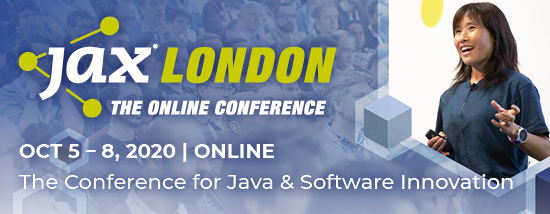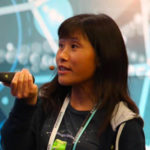A research study by The National Center for Women & Information Technology showed that “gender diversity has specific benefits in technology settings,” which could explain why tech companies have started to invest in initiatives that aim to boost the number of female applicants, recruit them in a more effective way, retain them for longer, and give them the opportunity to advance. But is it enough?
Three years ago, we launched a diversity series aimed at bringing the most inspirational and powerful women in the tech scene to your attention. Today, we’d like you to meet Christin Matt, Senior Game Designer.
Today’s Woman in Tech: Christin Matt, Senior Game Designer
Before Christin switched to the tech industry, she began studying German language and literature. Because there were no professional perspectives there, she started an apprenticeship as a game designer at the Ubisoft Design Academy. In 2010 Christin started her tech career at BlueByte as a junior game designer for Siedler 7. At BlueByte she worked her way up to become a game designer. For 7 years Christin has been employed at InnoGames and is now a Senior Game Designer. She works on the implementation of various new mobile games and has already received several awards.
Because there were no professional perspectives there, she started an apprenticeship as a game designer at the Ubisoft Design Academy. In 2010 Christin started her tech career at BlueByte as a junior game designer for Siedler 7. At BlueByte she worked her way up to become a game designer. For 7 years Christin has been employed at InnoGames and is now a Senior Game Designer. She works on the implementation of various new mobile games and has already received several awards.
When did you become interested in technology?
I owe this interest to my parents. Very early on, I received my first PC. My dad often brought me floppy disks with new games. My parents couldn’t do much with them and so, I already had Leisure Suit Larry at about 7. I also got a Game Boy when it came out – back then it was my greatest treasure. So as a small child I played a lot and kept this fascination.
How did you end up in your career path?
It was hard for me to know what I wanted to do later. Back then, jobs in the games industry were not very popular. So I started to study German language and literature. I enjoyed that very much. At the same time, I began to doubt what I could do with it for the next 20-30 years. Then I discovered a call for applications from a games school to become a game designer, so I broke off my studies and enrolled there. My parents supported me a lot, although they were certainly not overjoyed. Since then I have remained true to my profession and have already been able to work on many exciting projects. If I could decide again, I would advise the young Christin to learn programming properly. Even though I am very happy in my role at InnoGames, this is still a topic that interests me a lot.
Did you receive support from your family and friends? Do you have a role model?
Many people have supported me as a career starter – men as well as women. My first job was at Blue Byte. I joined Settlers 7 in the middle of its heyday. It was a great, but also very overwhelming experience. I must have been in the way often enough instead of really being able to help. I am grateful to many people from that time who patiently explained and taught me many things, including Lead Designer Andreas Nitsche. I do not have a role model in this sense. The industry is full of creative people that you can learn a lot from. There are many designers who inspire me with their games and their work. For example, Suda51 or Daniel Mullins. The industry is very open and it is always nice to be able to exchange ideas with these people at trade fairs.
Did someone ever try to stop you from learning and advancing in your professional life?
Up to now I have only been employed in companies that promote and value their employees, completely independent of origin, gender, or otherwise. This is also very important to me personally. At InnoGames, for example, training, fairness, feedback, and open and honest communication are very important.
It’s also a lot of fun to learn something new and to see how after the hundredth debugging, finally what you programmed is done.
A day in Christin’s life
I have been a Senior Game Designer at InnoGames for many years and I feel very comfortable in this role. I work with a small team on a new game. I don’t really have a daily routine. The job is varied and always brings new challenges, which is a lot of fun. We work from a conceptual pitch through a longer development phase to live operation. All of these phases are very different. For example, the job of a game designer often involves designing individual building blocks of the game, documenting them, collecting feedback from people with different expertise, and incorporating this into the design accordingly. What I like most about my work is the collaboration within the team.
Besides, I practice programming and do rather smaller things. This helps me to better understand the programmers and development limitations. It’s also a lot of fun to learn something new and to see how after the hundredth debugging, finally what you programmed is done.
Why aren’t there more women in tech?
At InnoGames there are generally a relatively large number of women. In my team, for example, we have female programmers and two graphic designers. If we add external departments, such as analysis or marketing, there are a few more. So there are many women joining us, which is great. The biggest hurdle is probably entry. Companies like InnoGames offer many opportunities to overcome this hurdle through their corporate culture. What is decisive here is ultimately talent.
Which stereotypes have you already encountered with regard to “Women in Tech” and what problems do they cause?
In fact, most of the rumours are more about the men in tech: smelly nerds and basement kids who have never seen a woman before. This can be a deterrent. But this is not at all in line with reality. Maybe I can clear up a little bit: most of the men I deal with in my job are very considerate, caring, and true team players. As a woman I don’t have the feeling of receiving different treatment and it smells good here most of the time.
Would our world look different if more women worked in STEM?
I think this should be extended and not just limited to gender. The more different people come together in companies, the better. We are proud to have so many different nationalities under one roof at InnoGames. This opens our horizons, fosters exchange, and creates a high level of tolerance and variety that we can pass on to the players in our products.
What does the future look like – will the diversity debate soon be history?
Unfortunately no. Unfortunately, there are black sheep in every industry, including the video games industry. As long as news about companies that do not value diversity properly continue coming to light, this discussion must continue and it is meaningful.
My recommendation would be to participate in a game jam and make a game with other people.
What advice (and tips) would you give to women who want a tech career?
Have courage and dare. Many clichés and prejudices do not apply at all. In the video game industry, for example, you can find a very varied, fun, and sustainable job. I’ve been doing it for 10 years now and wouldn’t want to miss a second of it. There are many exciting opportunities to find out about professional fields in the industry.
My recommendation would be to participate in a game jam and make a game with other people. These are offered by InnoGames regularly. Otherwise, you can learn a lot about trade fairs, for example, Quo Vadis or Respawn offers a rich program. An overview is also provided by the game industry trade association, which outlines various entry levels and job descriptions.
More Women in Tech:
- Women in Tech: Pernille Bjørn, professor & Head of Department for Research at the Department of Computer Science, University of Copenhagen, Denmark
- Women in Tech: Julia Wiencirz, Manager of the Solution Engineering Team at Applause
- Women in Tech: Cheryl Hung, VP, Ecosystem at the Cloud Native Computing Foundation
- Women in Tech: Eveline Oehrlich, independent research director at the DevOps Institute
- Women in Tech: Juliette Palacios, founder and executive director of Computing Minds
For even more Women in Tech, click here
The post Women in Tech: “The more different people come together in companies, the better” appeared first on JAXenter.
Source : JAXenter




















